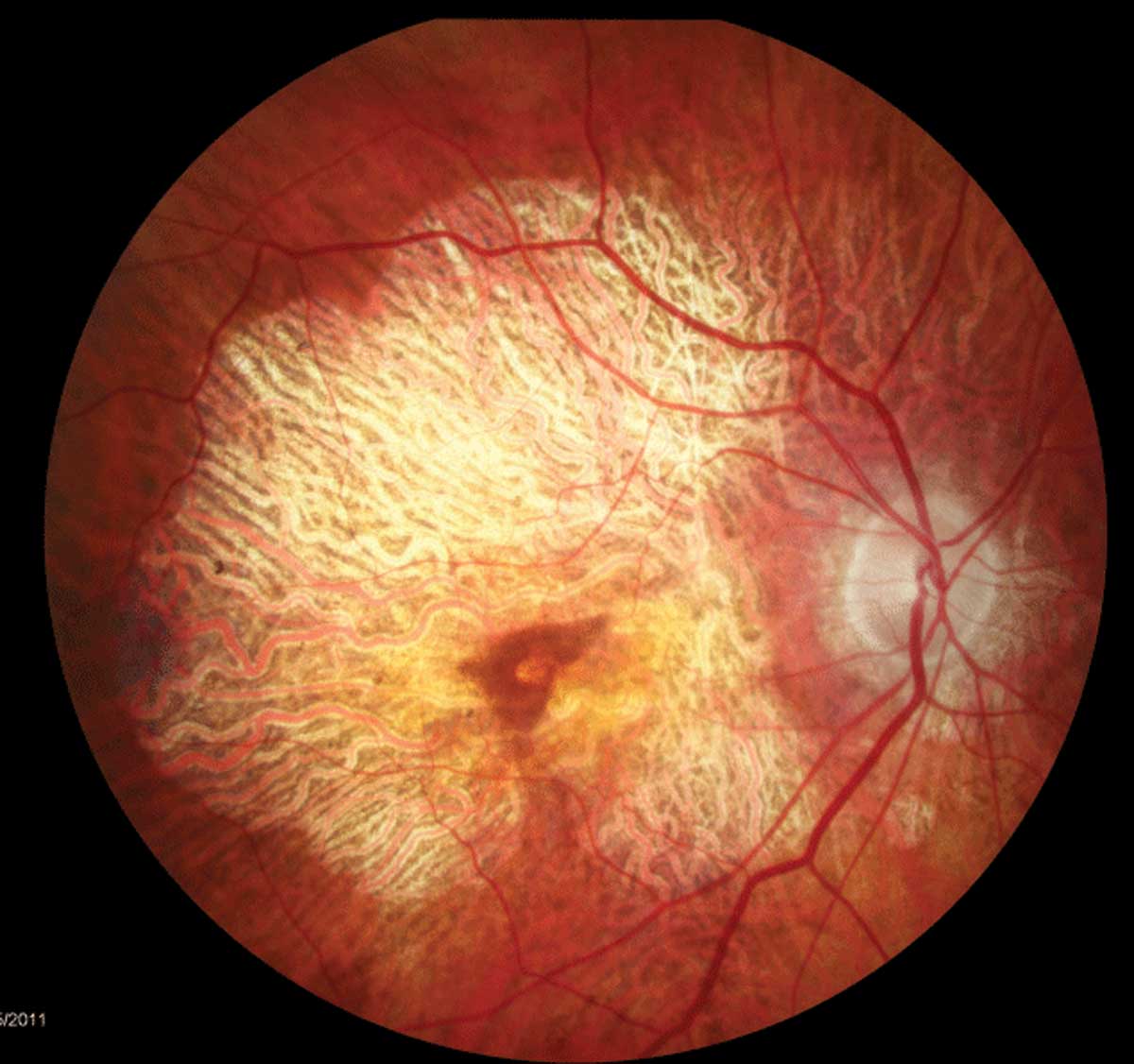 |
The MDS test may be useful for evaluating contrast sensitivity in patients with AMD. Photo: Julie Poteet, OD. Click image to enlarge. |
With a need for additional tools to accurately assess visual function in AMD, especially among patients with early-stage disease, researchers recently initiated a cross-sectional study to measure contrast sensitivity using the Pelli-Robson CS Chart and the motion diamond stimulus (MDS) assessment.
Twenty subjects with unilateral exudative AMD and contralateral dry AMD were included in the study. The researchers performed three assessments: the Pelli-Robson CS Chart, the MDS test and the Visual Function Questionnaire-25 (VFQ-25). Contrast sensitivity results from the Pelli-Robson and MDS tests were compared across the following groups: eyes with exudative AMD vs. dry AMD, exudative AMD vs. controls and dry AMD vs. controls.
The study authors used healthy, undilated eyes from another trial as the control group. ANOVA analysis was used to determine significance for the MDS output parameters (α: overall contrast threshold, β: adaptability of the visual system) and Pelli-Robson logCS. Vision-related quality of life was assessed through the VFQ-25.
The data demonstrated a significant difference in visual function according to the β parameter of the three groups; however, there was no significant difference in the α parameter. The Pelli-Robson contrast sensitivity findings for the three groups were also significantly different, which, the study authors noted, further support the MDS results. Additionally, a post-hoc analysis revealed a significant difference in β and Pelli-Robson logCS between patients with exudative AMD and their healthy counterparts.
These findings suggest the MDS test is a valuable tool in identifying contrast sensitivity impairment among patients with AMD. This has the potential to provide further understanding of the visual changes associated with AMD as well as quantify visual function changes not found on visual acuity testing alone, according to the study authors.
“The MDS is a contrast-generated illusory motion that can be useful in assessing the contrast sensitivity of patients with AMD. In addition, a shortened version of the test would be beneficial for testing patients in ophthalmology clinics that usually tend to be busy,” the researchers concluded. “Lastly, the MDS assessment can provide insight into patients’ perceived visual deficits not currently measured by traditional visual acuity.”
Maganti N, Squires N, Mishra S, et al. Contrast Sensitivity Testing in Age-Related Macular Degeneration Using Motion Diamond Stimulus. Clin Ophthalmol. 2022;16:507-515. |

